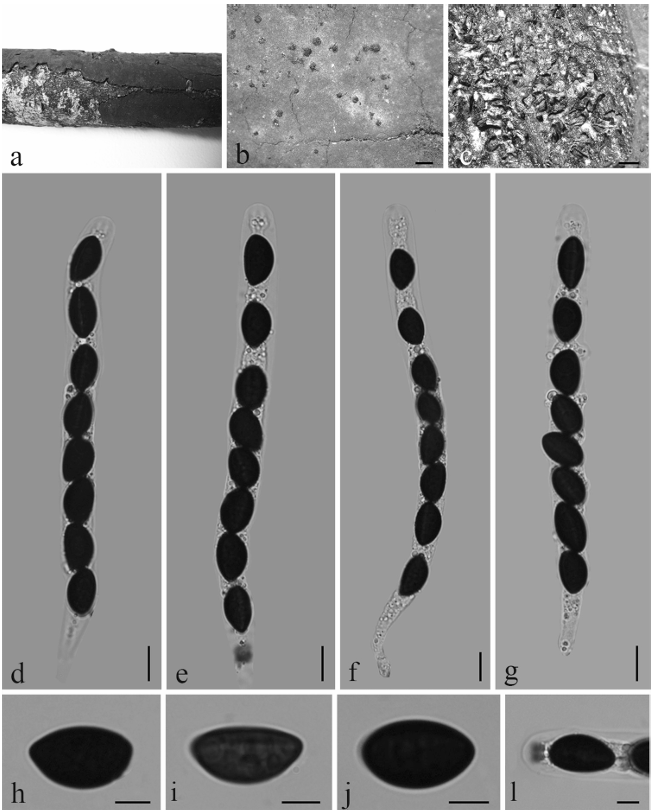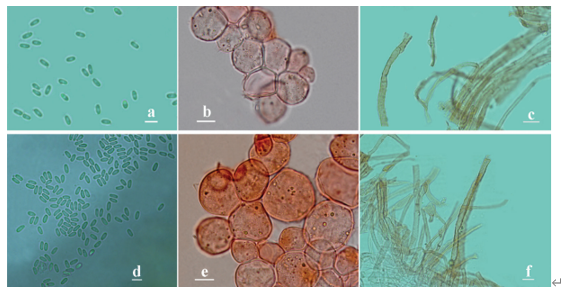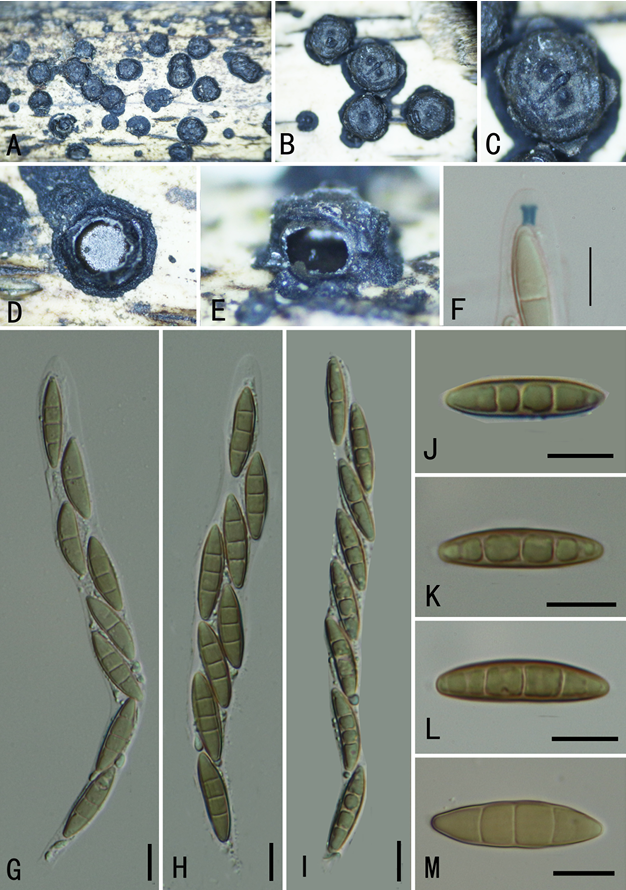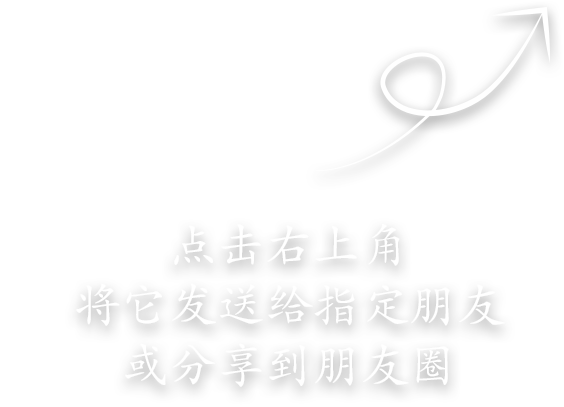Tomentella conclusa H.S. Yuan, X. Lu & Y.C. Dai 2020
Index Fungorum number: IF555735; Facesoffungi number: FoF 05612
Holotype: CHINA, Heilongjiang Province, Fenglin National Nature Reserve, on fallen angiosperm branch, 17 October 2016, Yuan 12086 (IFP 019263, holotype); on fallen trunk of Pinus koraiensis, 16 October 2016, Yuan 11986 (IFP 019264).
Morphological description
Basidiocarps annual, resupinate, duplex, adherent to the substrate, mucedinoid, without odour or taste when fresh, 0.3–0.6 mm thick, continuous. Hymenophoral surface smooth, pale brown to brown (6D4–6E5) and concolorous with subiculum when dry. Sterile margin often indeterminate, farinaceous, concolorous with hymenophore. Rhizomorphs absent. Subicular hyphae monomitic; generative hyphae clamped, thick-walled, occasionally branched, 5–7 μm diam, without encrustation, pale brown in KOH, acyanophilous, inamyloid. Subhymenial hyphae clamped, thinwalled, occasionally branched, 6–9 μm diam; hyphal cells short and inflated, pale brown in KOH, cyanophilous, inamyloid. Cystidia absent. Basidia 15–55 μm long and 7–12 μm diam at apex, 5–8 μm at base, with a clamp connection at base, utriform, not stalked, sinuous, without transverse septa, pale brown in KOH, 4-sterigmate; sterigmata 10–15 μm long and 2–3 μm diam at base. Basidiospores thick-walled, (8.5– )9–10(–10.5) × (7.5–)8–9(–10) μm, L = 9.46 μm, W = 8.57 μm, Q = 1.06–1.14 (n = 60/2), globose to subglobose in frontal and lateral views, echinulate, pale brown in KOH and distilled water, cyanophilous, inamyloid; echinuli usually isolated, up to 2 μm long.
Habitat: On fallen angiosperm branch.
Distribution: In China.
GenBank Accession: ITS: MK211703, MK211702; LSU: MK446352, MK850195.
Notes: Tomentella longiechinuli and T. conclusa formed a clade in the phylogeny (Fig. 111). They share similar characteristics: continuous basidiocarps adherent to the substrate, a farinaceous sterile margin, short subhymenial hyphal cells, utriform basidia, and the absence of rhizomorphs and cystidia. However, T. longiechinuli differs from T. conclusa by having pelliculose basidiocarps, non-inflated subhymenial hyphal cells and subglobose to bi-lobed basidiospores with longer echinuli (echinuli up to 3 μm long). T. longisterigmata X. Lu, K. Steffen & H.S. Yuan resembles T. conclusa by having mucedinoid basidiocarps adherent to the substrate, utriform basidia, basidiospores of approximately the same shape and size, and the absence of rhizomorphs and cystidia. However, the former species is differentiated by dark brown to chestnut basidiocarps, and slightly thick-walled subhymenial hyphae (Lu et al. 2018b).
Reference: Hai‑Sheng Yuan1,2· Xu Lu1,2 · Yu‑Cheng Dai3 ·
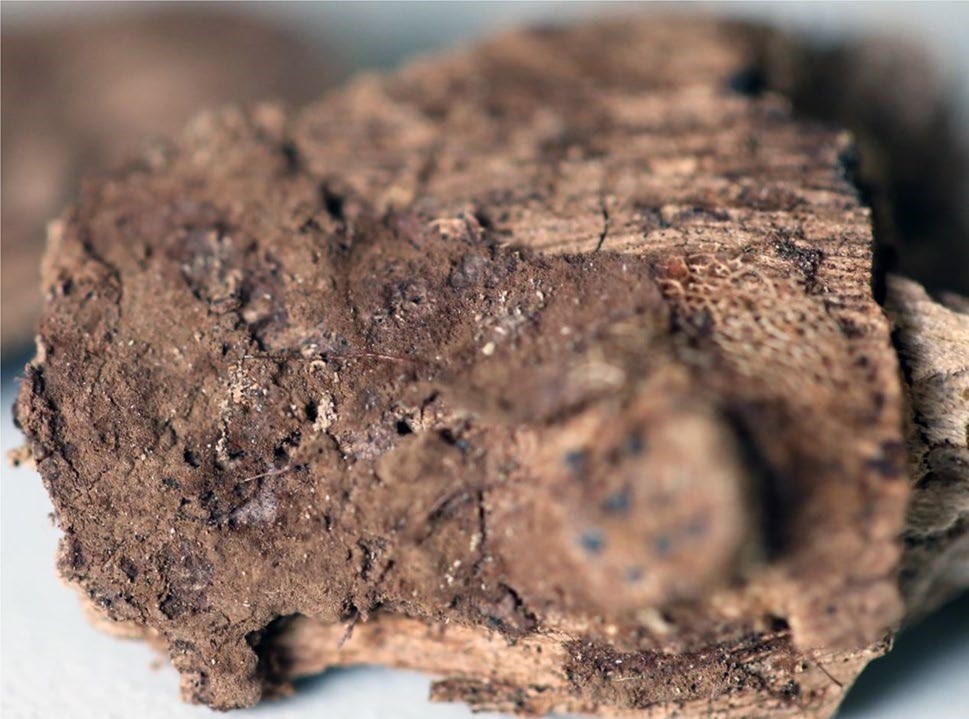
A basidiocarp of Tomentella conclusa (IFP 019263, holotype)


